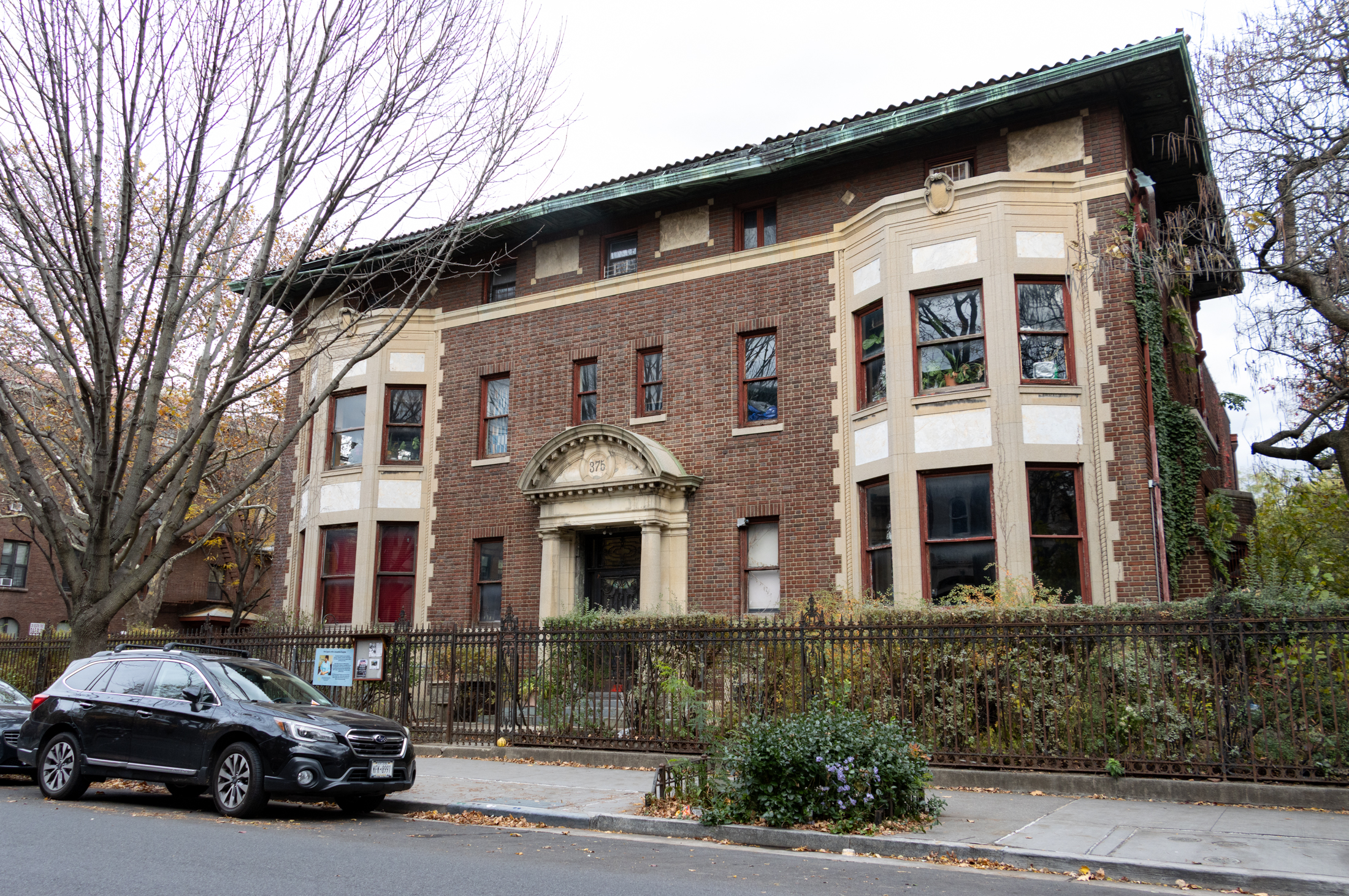Last Rites for The Spalding Building
From Atlantic Yards Report comes the sad news that the Spalding Building at 24 6th Avenue is being prepped to meet its maker. Another clear example of an architectural eyesore that needed to be purged from the blighted neighborhood. Not. Ratner purchased the building for $2,200,000 in August 2009. As far as we can figure…


From Atlantic Yards Report comes the sad news that the Spalding Building at 24 6th Avenue is being prepped to meet its maker. Another clear example of an architectural eyesore that needed to be purged from the blighted neighborhood. Not. Ratner purchased the building for $2,200,000 in August 2009. As far as we can figure out, there’s still that last-minute lawsuit out there involving the building’s air rights too.
The Spalding Building Is Prepared For Its Fate [AYR] GMAP
Photo by Raul Rothblatt





@jessibaby: There are NO public documents showing how much Ratner or Prokhorov will make on this deal. Many people have been trying to get that info for years. It’s an important unanswered question.
Do any of the disclosure documents for the bonds have numbers showing how much Ratner expects to make? It’s hard to believe this deal couldn’t be done without the interest rates that accompany tax-exempt debt. Also, it could have been built without the tax-exempt piece if Prokorov put up more equity, but I guess there would be no interest to tax in that scenario. :-/
jessibaby FOR SURE w/o the tax exempt subsidy at AY, no AY would be built and the tax collection on the bonds never would have happened anyway.
And if, the borrowing cost makes a project too expensive to build, then ZERO money is borrowed and no tax is collected on 1. The bond interest 2. The sales tax 3. The increased RE taxes for the property or nearby properties 4. The income taxes for the workers etc, etc, etc….
Again, you are correct that the issuing of bonds like this, POTENTIALLY means lower tax collections in the future (and potentially higher tax collections as well – if the other taxes make up the difference) – but it is WRONG to say that issuing such bonds is NEGATIVE revenue to the Government – just like it would be wrong to say that it would be Revenue positive – by arguing that other taxes will make up and exceed the difference. All of that is “potential” –
Ty, do you know how much much tax revenue, roughly, has been foregone in allowing AY to take advantage of the tax-exempt markets?
9-3-6; you originally said that AY wasnt a fair and reasonable application of the law now you are saying the law is too broad. Those are different arguments:
IMHO the law was applied fairly, reasonably AND consistently with other similar ED cases going back quite a long way.
BUT
if your issue is that the law should be changed b/c it is too broad (and that the public supports it), then get the law changed…thats ok -> but as of now, the law is fairly clear and the ED here was totally legal and I note that despite AY, Kelo, Columbia, etc…NYS law has not changed
fsrq — Yep. My apologies. The Yankees were planning on moving to Montauk, right? Or was it Omaha?
fsrq —
Option #1: If the money was borrowed from a bank, any revenue (interest) produced from the loan would be taxed.
Option #2: If a regular bond was issued, any revenue (interest) produced from the bond would be taxed.
Option #3: If the government creates a situation much more attractive that #1 and #2 by making the bond tax-free, then no tax is levied.
All options for getting enough money to build a stadium would entail the collection of taxes on revenue produced… well, except for the last one.
tybur6 – see my early post about the fallacy of arguing that lost POTENTIAL taxes as Revenue negative.
Further, the bond issued for this project and many other developments do not have recourse against the government, if AY(for example) fails to pay – creditors can only go after the development
“The Yankees stadium is an example where the stadium could have and would have been built no matter what…” – in the Bronx????? at that site???? that is hindsight at its worst (not saying that the subsidy was or wasnt necessary – just that it certainly wasnt as clear as you say)